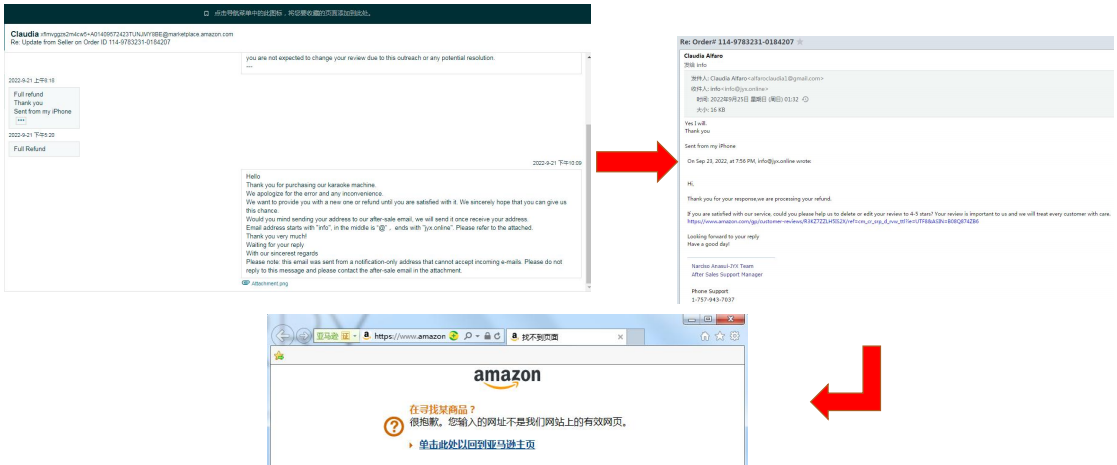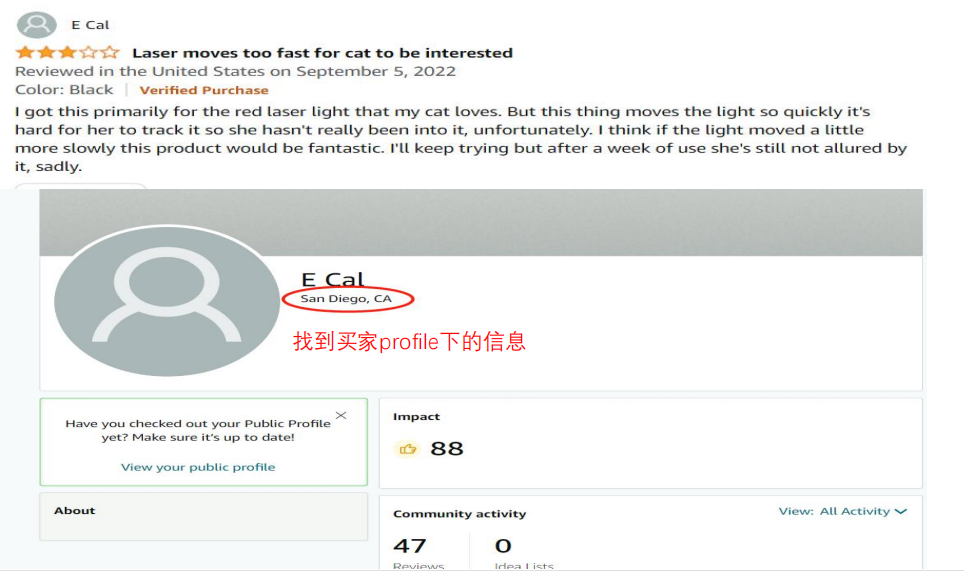


通過(guò)買家“評(píng)論功能”聯(lián)系
根據(jù)買家評(píng)論的內(nèi)容選擇相應(yīng)原因:
1. 如果買家評(píng)論表達(dá)了對(duì)產(chǎn)品的極度不滿或者覺(jué)得產(chǎn)品不值,但沒(méi)有寫出具體原因,建議選擇“禮貌退款”(選擇禮貌退款的比選擇客戶支持的回復(fù)率高)
2. 如果評(píng)論內(nèi)容將產(chǎn)品缺陷表達(dá)的很詳細(xì),建議選擇”客戶支持”。
不管選擇什么原因,發(fā)送郵件后都能在買家消息內(nèi)找到訂單號(hào),后續(xù)可繼續(xù)跟蹤買家回復(fù)之后站內(nèi)郵件引導(dǎo)到站外
參考模板
Hello
Thank you for purchasing our ****.
We apologize for the error and the inconvenience.
We would like to offer you a new one, or a full refund until you are satisfied. We sincerely hope you will
give us this opportunity.
Would you mind sending your address to our after-sales email address, once we receive your address.
The email address starts with "after-sales", has "@" in the middle and ends with "outlook.com". Please
refer to the attachment.
Thank you very much!
Waiting for your reply
With our most sincere regards
注意:郵箱要分開(kāi),不然會(huì)被屏蔽
Please note: this email was sent from a notification-only address that cannot accept incoming e-mails.
Please do not reply to this message and please contact the after-sale email in the attachment.(模擬亞馬遜給我們發(fā)郵件的時(shí)候的話術(shù),此郵件只是通知 不必回復(fù))
站內(nèi)敏感詞,絕對(duì)不能出現(xiàn)
amend, change, modify, alter, withdraw, retract, edit, remove, delete, update, revise,
erase+review/evaluation/comment
可以參考并謹(jǐn)慎使用
share/reshare your experience, make your exprience disappear, adjust shopping
experience, reassess the product
使用的時(shí)候最好在reshare和experience,單詞詞間隔開(kāi),加空格或者“-”,如“re-share”等,可以用類似“Hope you can be satisfied with our service”的話語(yǔ)。
站內(nèi)引出操作:
選擇“禮貌退款”方式引出買家回復(fù);然后再通過(guò)附件引出到站外郵箱

通過(guò)買家Profile展示的信息找到訂單,站內(nèi)聯(lián)系

下載訂單列表,篩選出州,然后Ctrl+F找出城市,確認(rèn)訂單

搜索訂單,確認(rèn)訂單名字與review名字相符合

小技巧
1、售后郵箱建議企業(yè)郵箱,網(wǎng)站域名作為郵箱后綴,外國(guó)人常用的郵箱,如Outlook.com,Hotmail.com,Gmail.com,Yahoo.com等,后綴結(jié)尾的郵箱。
2、郵箱命名建議用品牌名,如“品牌名@outlook.com”,“品牌名@Hotmail.com”,“品牌名
@Gmail.com”。
3、新注冊(cè)郵箱需要預(yù)熱,防止郵箱信譽(yù)過(guò)低。
4、郵箱設(shè)置簽名。
5、郵件主題,包括正文里減少或避免100%、免費(fèi)free、促銷promotion、禮品gift、提供offer、美
元符號(hào)$等推銷性質(zhì)太濃的敏感字眼出現(xiàn)。如“
$30 gift card from Amazon”,可以使用“important+訂單號(hào)”,或者“unexpected problem with your order”。
6、郵件中最好不要有URL和圖片,有鏈接和圖片,很容易被攔截,進(jìn)入垃圾郵箱。
7、不要在短時(shí)間內(nèi)發(fā)送大量同內(nèi)容的郵件,要分開(kāi)時(shí)間段發(fā)送,發(fā)送郵件頻率不要太高,一般每隔2-3天發(fā)一次。
8、避免主題全大寫,郵件主題盡量不要一樣,主題不要為了吸引買家打開(kāi)而弄得花里胡哨,類似
“!!!、¥、$”過(guò)多的標(biāo)點(diǎn)符號(hào);郵件正文單詞拼寫要準(zhǔn)確,語(yǔ)法沒(méi)錯(cuò)誤,沒(méi)有亂碼,不要用太奇怪
的字體。
9、郵件發(fā)送時(shí)間選擇當(dāng)?shù)貢r(shí)間早上或者晚上。
(來(lái)源:公眾號(hào)跨境服務(wù)007)
以上內(nèi)容屬作者個(gè)人觀點(diǎn),不代表雨果跨境立場(chǎng)!本文經(jīng)原作者授權(quán)轉(zhuǎn)載,轉(zhuǎn)載需經(jīng)原作者授權(quán)同意。?



